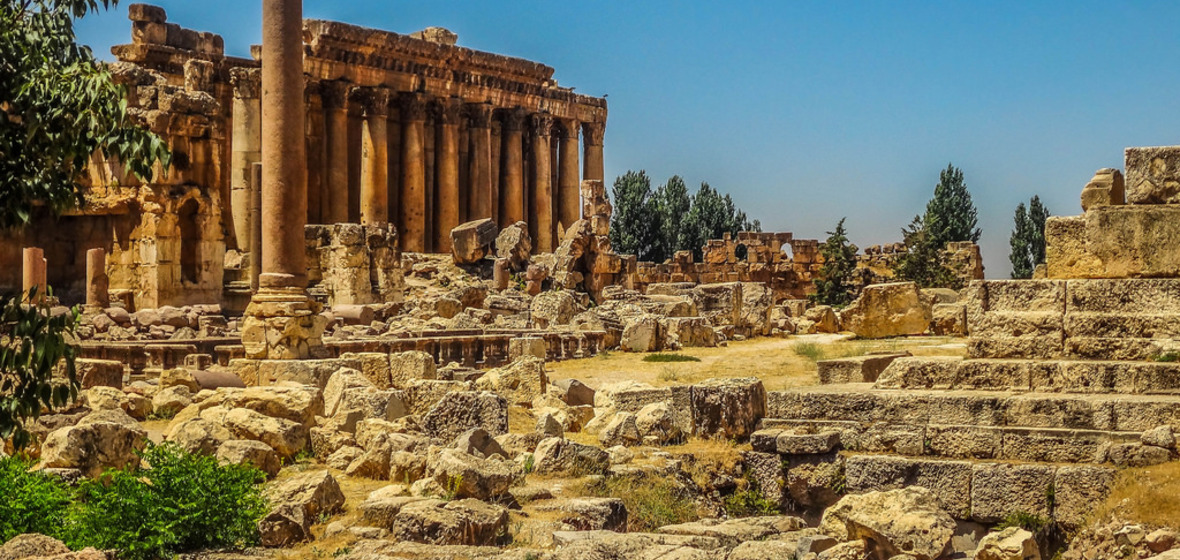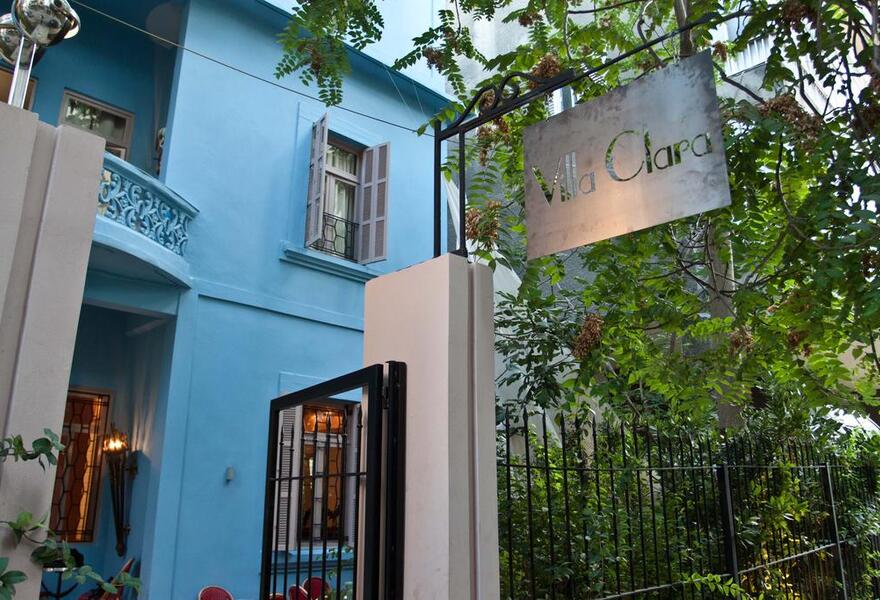This part of the world has been an important crossroads between the Middle East and the West for centuries, and these lands have been ‘owned’ by the Phoenicians, the Egyptians, the Greeks, Persians, Romans, Crusaders and the Ottoman Empire, along with numerous local groups and cultures, so it’s extremely rich in history and archaeology. Its long Mediterranean shoreline is extremely beautiful, and dotted with interesting port towns and beach resorts, its green interior has impressive mountains and verdant valleys, and the cuisine is really something. Beirut, the capital, is one of the most glamorous cities in the region, well on its way to reclaiming its title as the ‘Paris of the Middle East”. So what’s stopping you? Probably the political instability in the region, and an awareness of there being so many Syrian and Palestinian refugees around Lebanon’s borders...which is a very good reason! However the Foreign Office advice only advises against travel to some parts of Lebanon, with great swathes around Beirut currently considered safe. Which is why we have focussed our recommendations for the best places to stay in Lebanon in these areas.
We’re not saying travelling to Lebanon is the same as travelling to France, but as long as you’re aware of the risks it’s relatively easy to stay safe, and our recommendations for the best places to stay in Lebanon will help you do just that.
Some of our Lebanon Collections:
Where to Stay
- After decades of civil war, Beirut is reclaiming its image as a fashionable, friendly, vibrant and culturally dense city. On one street you’ll find ancient temples, modern art galleries, chic boutiques and cafes, and glittering skyscrapers. You might even find a beautiful Mediterranean coastline at the end of the street, or an ancient city effectively an open-air museum full of Roman columns and 12th century Crusader castles. Take some time to walk the Beirut Heritage Trail, nearly two miles of Byzantine mosaics, Roman baths, archaic mosques, antiquated underground streets and old cathedrals, but don’t forget the modern treasures either, the galleries, the nightclubs, the hummus bars.
- The region outside Beirut and around Mount Lebanon is where you’ll find the big adventuring playground of snowcapped mountains, the smaller hills running down to the Mediterranean and the lush Bekaa Valley with its wine growing and the incredible ruins of Baalbek, or the ’Sun City’. This is also where you’ll find the Jeita Grotto, an incredible cave system.
- The Mount Lebanon region is also where you’ll find Byblos, the pretty fishing village and UNESCO World Heritage Site, with a truly ancient harbour, overlooked by the port’s own Crusader castle. It’s also got a medieval town centre and souq and a Roman archaeological site. And great nightlife.
- The Mount Lebanon region is also where you’ll find pretty Dier el Qamar, which is where Lebanon’s emirs lived during the 17th and 18th centuries. This is a really charming village with some beautiful buildings, the Beiteddine Palace being one of them, and it’s a popular weekend mini-break option from Beirut.
- If you go north you’ll find Tripoli, which is Lebanon’s second largest city, known for its incredible souk which is comparable Marrakech’s medina, and its medieval architecture: both Crusader and Ottoman. It’s also known for its incredible sweets.
- Northern Lebanon is also where you’ll find the country’s highest mountain, Qornet As Sawda, and some of its best skiing in the Cedars resort, plus some wonderfully remote villages, including those in the World Heritage Listed Qadisha Valley, which is home to a collection of isolated monasteries cut by hand out of the rocks and cliffs here.
- Southern Lebanon is perfect for anyone with even a slight inclination towards Indiana Jones. There are settlements here that date back around six thousand years to the Assyrians, and the beautiful Mediterranean coastline is dotted with Biblical sites and Greek, Roman and Phoenician ruins. The region has Byzantine and Ottoman sites too. Sidon is the port capital of this region, surrounded by banana and citrus groves, but Tyre is more popular for visitors because of its beautiful coastal spot and Roman ruins. Tyre has some of the country’s cleanest beaches, and some fantastic historic treasures from it’s heyday as the home of the purple dye called Tyrian Purple.
- The rural beauty of the Bekaa Valley runs along Lebanon’s eastern flank, but so does a border with Syria, so this region, usually called the “bread basket of Lebanon” is currently difficult to travel to and through.
Use our guide to the best places to stay in Lebanon, and start to plan your trip to this mesmerizing country.








